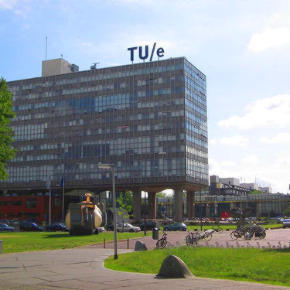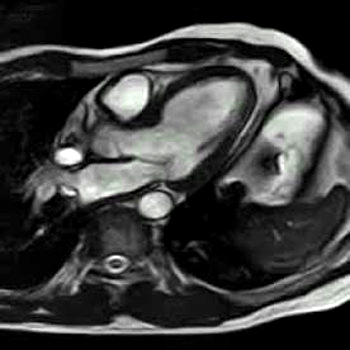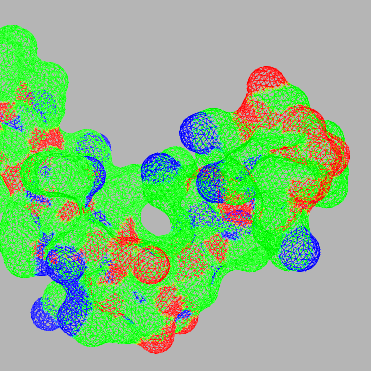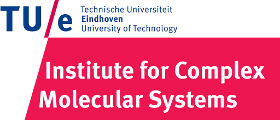Team:TU-Eindhoven
From 2013.igem.org
(Difference between revisions)
| Line 7: | Line 7: | ||
Within our project we aim to focus on a relatively new form of {{:Team:TU-Eindhoven/Template:Tooltip | text=MRI | tooltip=Magnetic Resonance Imaging }}: {{:Team:TU-Eindhoven/Template:Tooltip | text=CEST | tooltip=Chemical Exchange Saturation Transfer }} imaging. Within CEST imaging proteins containing hydrogen atoms can be used to create the same quality of images as when heavy metals are used. We are hoping to use bacteria to produce these proteins once they enter the body, allowing the bacteria to be our delivery system and production factory. Unique to our process will be the injection of the protein producing bacteria into the patient, as well as the tumor targeting element of the bacteria. Tumors present a {{:Team:TU-Eindhoven/Template:Tooltip | text=hypoxic | tooltip=Low oxygen saturation }} environment, allowing them to be targetted by our bacteria. These hypoxic conditions will furthermore be the trigger for the production of our CEST proteins. This will ensure contrast is created where tumors are present, and also provides a good means of tumor targeting for drug delivery in the future. | Within our project we aim to focus on a relatively new form of {{:Team:TU-Eindhoven/Template:Tooltip | text=MRI | tooltip=Magnetic Resonance Imaging }}: {{:Team:TU-Eindhoven/Template:Tooltip | text=CEST | tooltip=Chemical Exchange Saturation Transfer }} imaging. Within CEST imaging proteins containing hydrogen atoms can be used to create the same quality of images as when heavy metals are used. We are hoping to use bacteria to produce these proteins once they enter the body, allowing the bacteria to be our delivery system and production factory. Unique to our process will be the injection of the protein producing bacteria into the patient, as well as the tumor targeting element of the bacteria. Tumors present a {{:Team:TU-Eindhoven/Template:Tooltip | text=hypoxic | tooltip=Low oxygen saturation }} environment, allowing them to be targetted by our bacteria. These hypoxic conditions will furthermore be the trigger for the production of our CEST proteins. This will ensure contrast is created where tumors are present, and also provides a good means of tumor targeting for drug delivery in the future. | ||
| - | {{:Team:TU-Eindhoven/Template:Quote | text=We will | + | {{:Team:TU-Eindhoven/Template:Quote | text=We will attempt to create bacteria that can visualize tumors<br />on a MRI scan, withouth the use of heavy metals. | by=Mission Statement of the TU/e iGEM 2013 Team | position=right }} |
{{:Team:TU-Eindhoven/Template:FrontThumbnailGallery}} | {{:Team:TU-Eindhoven/Template:FrontThumbnailGallery}} | ||
{{:Team:TU-Eindhoven/Template:FrontThumbnail | image=TUe_Main_Building.jpg | link=/Team:TU-Eindhoven/Team | heading=About Us | text=We are the 2013 iGEM team from Eindhoven, the Netherlands. }} | {{:Team:TU-Eindhoven/Template:FrontThumbnail | image=TUe_Main_Building.jpg | link=/Team:TU-Eindhoven/Team | heading=About Us | text=We are the 2013 iGEM team from Eindhoven, the Netherlands. }} | ||
Revision as of 10:57, 22 May 2013



Welcome to the homepage of the 2013 iGEM team of the Eindhoven University of Technology.
Within our project we aim to focus on a relatively new form of MRI: CEST imaging. Within CEST imaging proteins containing hydrogen atoms can be used to create the same quality of images as when heavy metals are used. We are hoping to use bacteria to produce these proteins once they enter the body, allowing the bacteria to be our delivery system and production factory. Unique to our process will be the injection of the protein producing bacteria into the patient, as well as the tumor targeting element of the bacteria. Tumors present a hypoxic environment, allowing them to be targetted by our bacteria. These hypoxic conditions will furthermore be the trigger for the production of our CEST proteins. This will ensure contrast is created where tumors are present, and also provides a good means of tumor targeting for drug delivery in the future.We will attempt to create bacteria that can visualize tumors
Mission Statement of the TU/e iGEM 2013 Team
on a MRI scan, withouth the use of heavy metals.

About Us
We are the 2013 iGEM team from Eindhoven, the Netherlands.
Learn more...
Wetlab
Take a look at the results of the broad range of experiments performed this year.
Learn more...
Drylab
Various simulations were carried out to support the wetlab experiments.
Learn more...
 "
"



